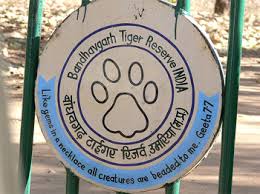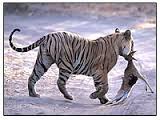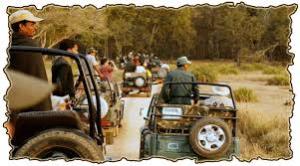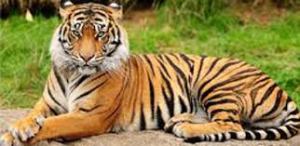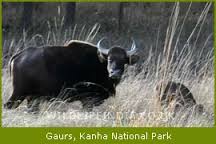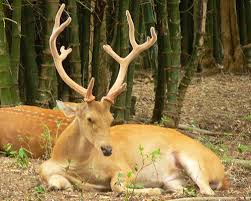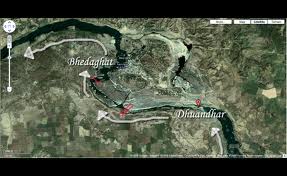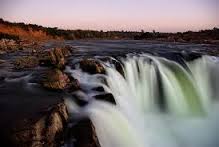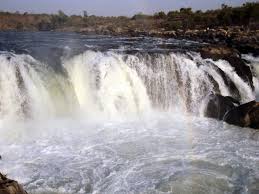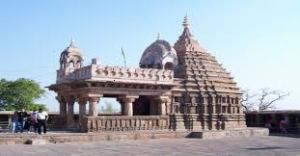Option 5: Bandhavgarh with Kanha for wild life lovers
How to reach:
By air: Nearest airport is at Jabalpur (156 km.), connected with regular flights from Delhi & Bhopal.
By Rail: Kanha and Bandhavgarh National Parks are well connected with Rail heads at Jabalpur , Satna and Bilaspur
By Road: Kanha and Bandhavgarh National parks are well connected with a network of State highways
Things to do:
Bandhavgarh National Park is one of the popular national parks in India located in the Umaria district of Madhya Pradesh. The park derives its name from the most prominent hillock of the area, which is said to be given by Hindu Lord Rama to his brother Lakshmana to keep a watch on Lanka (Ceylon). Hence it was named Bandhavgarh which means Brother’s Fort in Sanskrit. This park has a large biodiversity. The density of the tiger population at Bandhavgarh is one of the highest known in India. The park has a large breeding population of leopards and various species of deer. Once a hunting reserve of the royal family of Rewa, Bandhavgarh was declared a park in 1968. This is also the site where the famous WHITE TIGERS of Rewa were discovered. Maharaja Martand Singh of Rewa captured the first white tiger in this region in 1951. This white tiger, Mohan, is now stuffed and on display in the palace of the Maharajas of Rewa. Bandhavgarh has one of the highest density of Bengal tigers known in the world, and is home to some famous named individual tigers and are mainly descendents of Charger and Sita. Many more interesting facts for you to discover as you visit the park.
There are four main zones of the national park namely Tala, Magdhi, Khitauli, and Panpatta. Tala is the richest zone in terms of biodiversity, mainly tigers. With the tiger at the apex of the food chain, it contains 37 species of mammals. According to forest officials, there are more than 250 species of birds, about 80 species of butterflies, a number of reptiles. One of the biggest attractions of this national park is the tiger. Bandhavgarh has a very high density of tigers within the folds of its jungles. The population of tigers in the park in 2012 is about 44-49. There is a saying about the Park that goes: “In any other Park, You are lucky if you see a tiger. In Bandhavgarh, you are unlucky if you don’t see (at least) one.
Changes in Bandhavgarh tourism policies Bandhavgarh shot into fame with Charger and Sita sightings in mid nineties, ever since there has been no looking back for this national park in MP. The Tiger density in the Tala zone of this park puts rest of the parks to shame. A rare jewel as far as Tiger sightings are concerned, Bandhavgarh attracted lot of media attention for the number of Tigers one would see in each Safari. Tourists would come out of the park saying they saw 4, some 5, some even 6 in just one safari. Sounds unbelievable, but it is 100% true
In the Bandhavgarh National Park the visitors can be entered on Elephant back apart from the Four wheelers. In the elephant safaris a forest department guide always accompanies the guests who will direct and tell about the flora and fauna of the park. The best time to visit the park is early in the morning or after 4 pm to spot the animals. The park is closed from 1st July to 15th October, which is the monsoon season and the mating time for tigers.
Kanha: The lush sal and bamboo forests, grassy meadows and ravines of Kanha provided inspiration to Rudyard Kipling for his famous novel “Jungle Book”. The Kanha National Park in Madhya Pradesh came into being in 1955 and forms the core of the Kanha Tiger Reserve, created in 1974 under Project Tiger. The Park’s landmark achievement is the preservation of the rare hardground Swamp Deer (Barasingha), saving it from near extinction. Stringent conservation programs for the overall protection of the Park’s fauna and flora, makes Kanha one of the most well maintained National Parks in Asia.
Kanha Tiger Reserve is located in the Maikal Hills of the Satpuras spreading over two revenue districts. The habitat has an excellent interspersion of geographical attributes and welfare factors which foster a rich population of wildlife. Kanha is virtually a tiger land, with several tigresses occupying traditionally famous natal areas. Several pockets of high density areas lead to competition amongst tigers for food and space with several signs indicating their presence. Inter group fights among tigers and cub morality caused by male tigers is common in Khana. There is a rich assemblage of co-predators and prey animals. Packs of Wild dogs chasing large herds of Spotted deer are a commonsight in Kanha.
Also a rare species of Black buck were once found in Kanha, but became very rare for unknown reasons. They vanished completely, but have been reintroduced recently inside a fenced area in the park. Nilgai can still be seen near the Sarahi Gate, while the Indian Wolf once commonly seen at Mocha is a rare sight now. Hyena and sloth bear are seen occasionally. Langurs and wild boars are common, but the pugnacious rhesus macaque is seen less often. Nocturnal animals like fox, hyena, jungle cat, civets, porcupine, honey badger and hares can be seen outside the park confines.
Reptiles like pythons, cobras, krait, rat snakes, vipers, keelbacks and grass snakes are nocturnal animals, and are therefore rarely seen. There are many species of turtles as well as amphibians found in or near the water bodies.
Kanha and Satpura forest being a part of Gondwana, now famous as tiger reserve, once upon a time were ruled by wild Indian Elephants
Jabalpur: An important city of Madhya Pradesh, Jabalpur is steeped with historical significance dating back to many eons. It is also known for its picturesque marble rock formations (Bhedaghat) on the banks of the river Narmada. The River Narmada passes close to Jabalpur, but shyly avoids the town. The town of Jabalpur though has little to offer in the town itself, However adventure awaits a little outside the town at Bhedaghat about 20kms from Jabalpur. Few of the spots worth visiting near Jabalpur are:
Bhedaghat: Located at about 20kms away from Jabalpur, Bhedaghat is a famous picnic spot with most famous sights such as Dhuandhar Falls, Marble Rocks, and the Chaunsath Yogini temple. Boating facilities are available from November to May and while boating by moonlight is a thrilling experience. The Marble Rocks have recently been floodlit, adding a new dimension to their splendor. The boating fares are about Rs. 20 per person. There is also a ropeway for crossing the length of the river which provides the place an adventurous touch.
Dhurandhar falls: The Narmada, making its way through the marble rocks, narrows down and then plunges in a waterfall known as Dhuandhar or Smoke Cascade. So powerful is the plunge that its roar is heard from a far distance. The falls and the breaking of the volume of water at the crest present an awesome spectacle of Nature’s power unleashed.
Chausath Yogni Temple: One of the oldest heritage sites in India, Chausath Yogini Temple is situated on a hilltop in Jabalpur. Built in the 11th century A.D., The temple is the abode of Goddess Durga along with 64 yoginis or shaktis considered to be the different forms of the Goddess. Though the temple has been partially damaged, it speaks greatly of the ancient dynasties that ruled in Jabalpur.
Around 150 steep steps lead to the shrine which is at a good height. The complex of the temple consists of 64 shrines in circular motion, one for each yoginis and a main shrine where Lord Shiva and his consort Goddess Parvati are seen riding on Nandi, the sacred bull. The temple was constructed during the reign of Kalchuri Dynasty and was mainly made with local granite. Mughal invaders, later on, destroyed and deformed most of the temple.
Suggested Itinerary:
Day1 : Upon arrival in Jabalpur, Check in at the hotel .You may go ahead to explore the small city with excursions to Bhedaghat, Dhurandhar Falls and Chausath Yogini temple. You may also go for a Bargi River Cruise operated by Madhya Pradesh tourism department. Overnight at Jabalpur.
Day 2: After breakfast you may drive down to Kanha National Park. You may go for an evening Game drive. Comfortable overnight stay at Kanha.
Day 3: you may go for a village walk or game drive, Later after breakfast, drive down to Bandhavgarh. Check in at the hotel and you may opt to go for a game drive or just relax. Overnight stay in Bandhavgarh.
Day 4: you may opt to go for a morning safari at Bandhavgarh. You may later have breakfast and check out and take your onward jouney to Jabalpur for catch your train or flight back home
